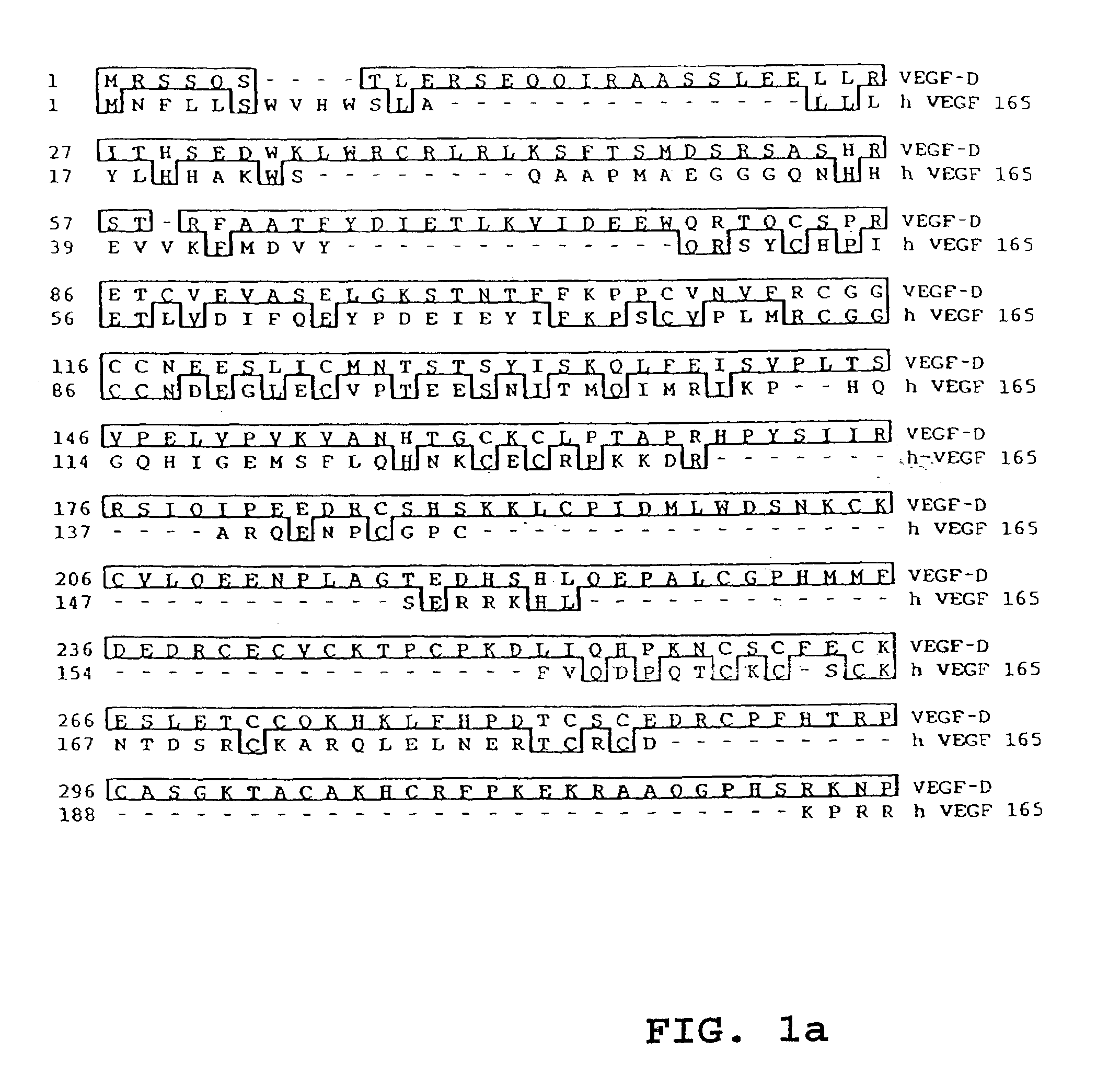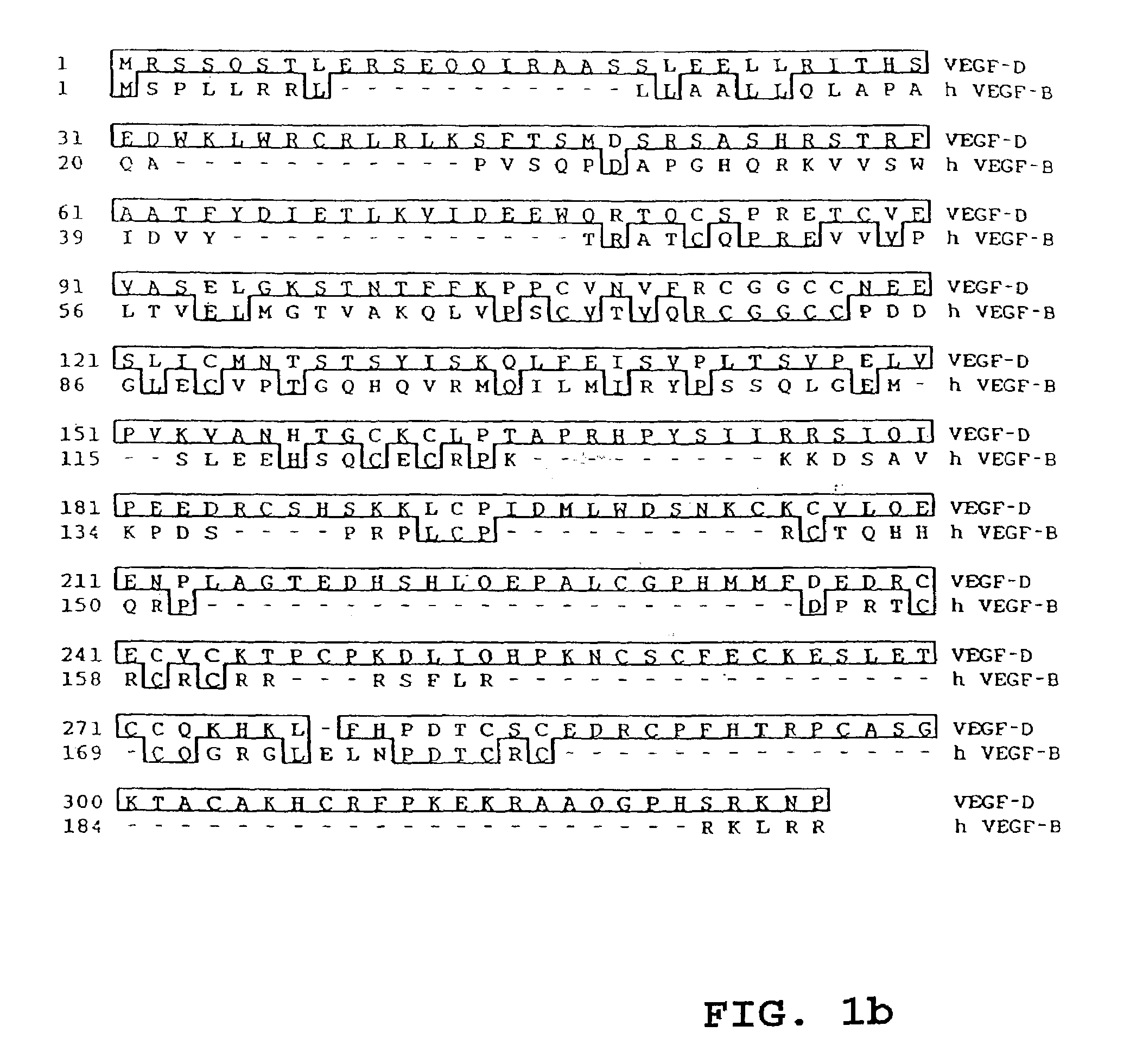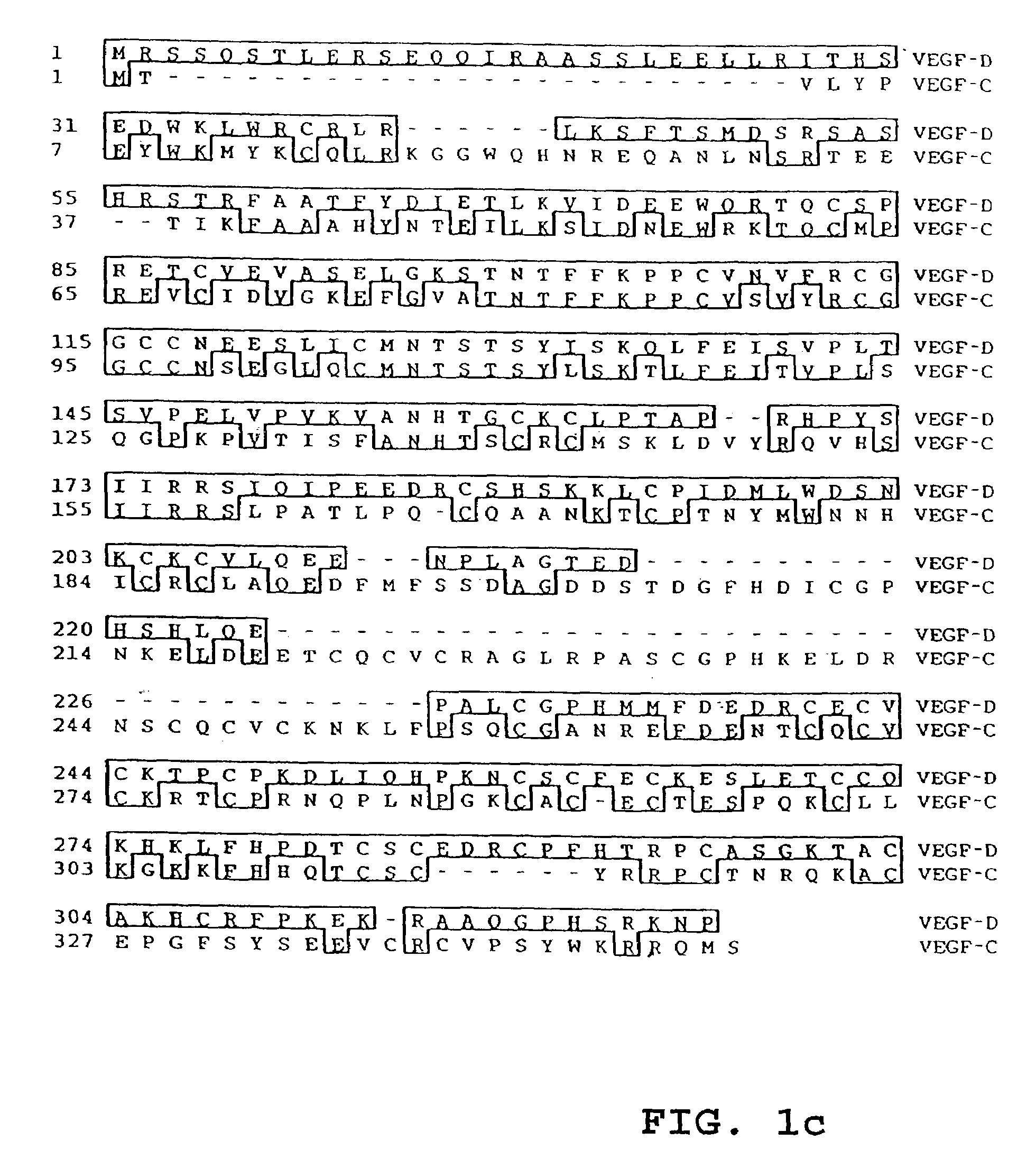Vascular endothelial growth factor D (VEGF-D) antibodies and vectors, and methods of use
- Summary
- Abstract
- Description
- Claims
- Application Information
AI Technical Summary
Benefits of technology
Problems solved by technology
Method used
Image
Examples
example 1
[0073]It has been speculated that no further members of the VEGF family will be found, because there are no known orphan receptors in the VEGFR family. Furthermore, we are not aware of any suggestion in the prior art that other such family members would exist.
[0074]A computer search of nucleic acid databases was carried out incidentally to another project, using as search topics the amino acid sequences of VEGF, VEGF-B, VEGF-C, and PlGF. Several cDNA sequences were identified by this search. One of these sequences, GenBank Accession No. H24828, encoded a polypeptide which was similar in structure to the cysteine-riched C-terminal region of VEGF-C. This sequence was obtained from the database of expressed sequence tags (dbEST), and for the purposes of this specification is designated XPT. The XPT cDNA had been isolated from a human cDNA library designated “Soares Breast 3NbHBst”, which was constructed using mRNA from an adult human female breast tissue. As far as can be ascertained, ...
example 2
Cloning of cDNA Encoding VEGF-D
[0078]A sample of the XPT cDNA reported in dbEST was obtained from the American Type Culture Collection, which is a registered supplier of cDNA clones obtained by the IMAGE Consortium. The identity of the XPT cDNA was confirmed by nucleotide sequencing, using the dideoxy chain termination method (Sanger et al., Proc. Natl. Acad. Sci. USA, 1977 74 5463–5467).
[0079]The XPT cDNA was used as a hybridization probe to screen a human breast cDNA library, which was obtained commercially from Clontech. One positive clone was isolated, and this clone was then sequenced on both strands. The nucleotide sequence was compiled, and an open reading frame was identified. The nucleic acid sequence is set out in SEQ ID NO:1. The polypeptide encoded by this sequence was designated VEGF-D, and its deduced amino acid sequence, designated SEQ ID NO:3, is set out in FIG. 3. In FIG. 3, putative sites of N-linked glycosylation, with the consensus sequence N-X-S / T in which X is ...
example 3
Characteristics of VEGF-D
[0080]The amino acid sequence of VEGF-D was compared with those of human VEGF-A165, VEGF-B, VEGF-C, and PlGF. These comparisons are set out in FIGS. 1A to D, respectively. The degree of sequence homology was calculated, and if gaps in sequence introduced for the purposes of alignment are not considered in the calculation, VEGF-D is 31% identical to VEGF, 48% identical to VEGF-C, 28% identical to VEGF-B, and 32% identical to PlGF. Thus, the most closely-related protein identified was VEGF-C.
[0081]Computer searches of the GenBank, EMBL and SwissProt nucleic acid databases did not reveal any protein sequences identical to VEGF-D. As expected from the sequence alignment referred to above, the most closely related protein found in these databases was VEGF-C. Searches of dbEST were also performed, but did not reveal any sequences encompassing the entire coding region of VEGF-D. The sequence of VEGF-D is unrelated to that of Tie-2 ligand 1 as disclosed in WO 96 / 112...
PUM
| Property | Measurement | Unit |
|---|---|---|
| Temperature | aaaaa | aaaaa |
| Molar density | aaaaa | aaaaa |
| Acidity | aaaaa | aaaaa |
Abstract
Description
Claims
Application Information
 Login to View More
Login to View More - R&D
- Intellectual Property
- Life Sciences
- Materials
- Tech Scout
- Unparalleled Data Quality
- Higher Quality Content
- 60% Fewer Hallucinations
Browse by: Latest US Patents, China's latest patents, Technical Efficacy Thesaurus, Application Domain, Technology Topic, Popular Technical Reports.
© 2025 PatSnap. All rights reserved.Legal|Privacy policy|Modern Slavery Act Transparency Statement|Sitemap|About US| Contact US: help@patsnap.com



